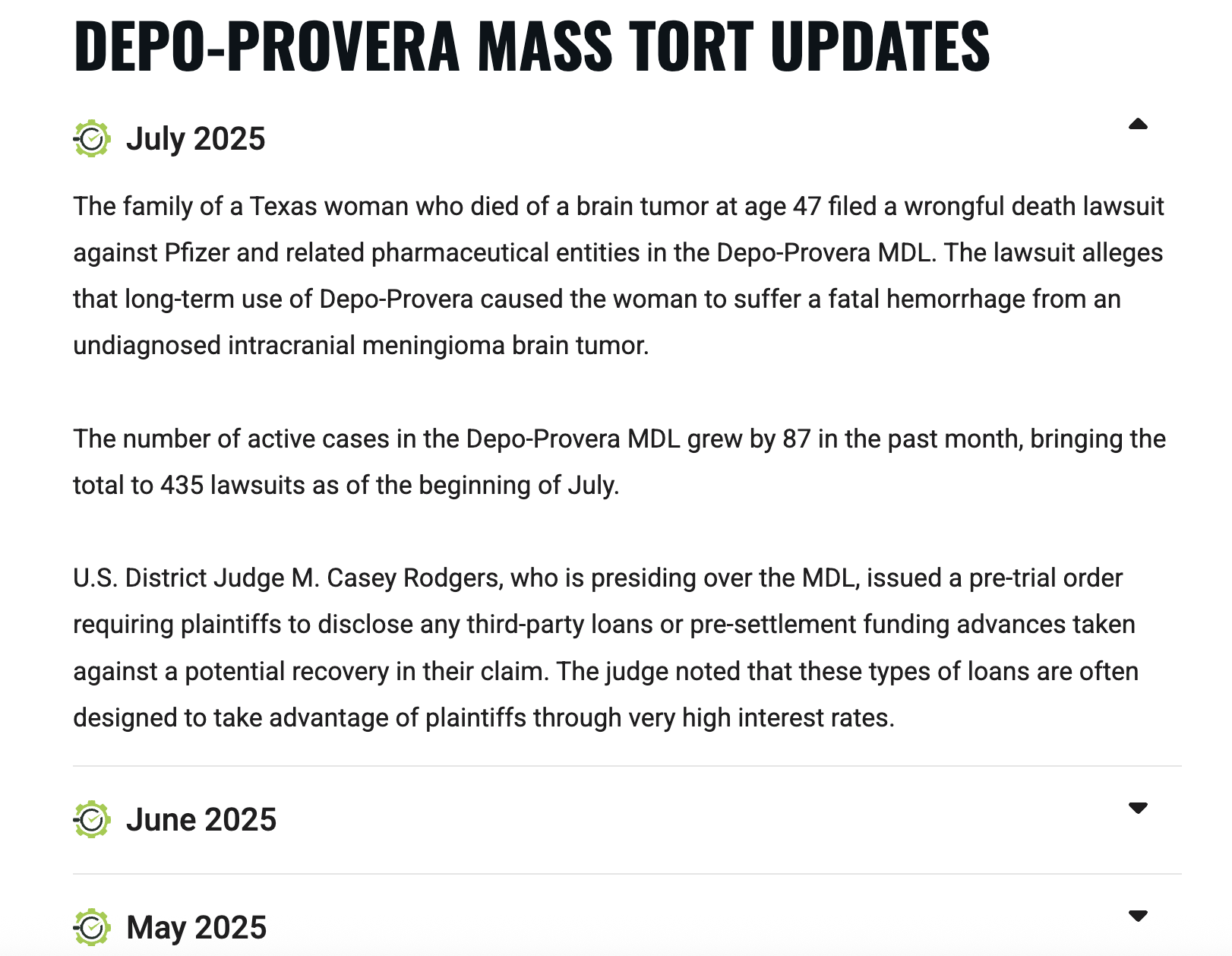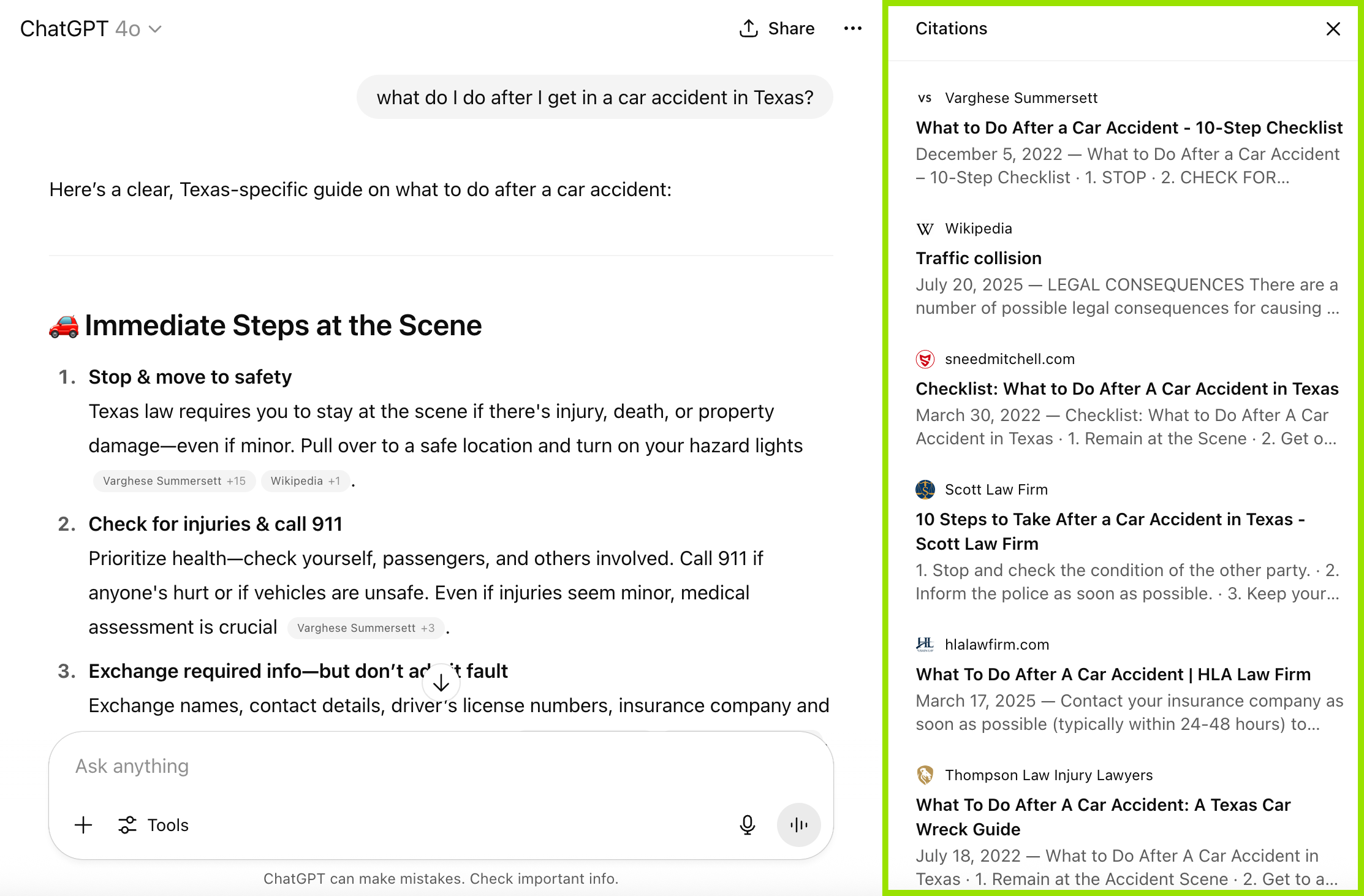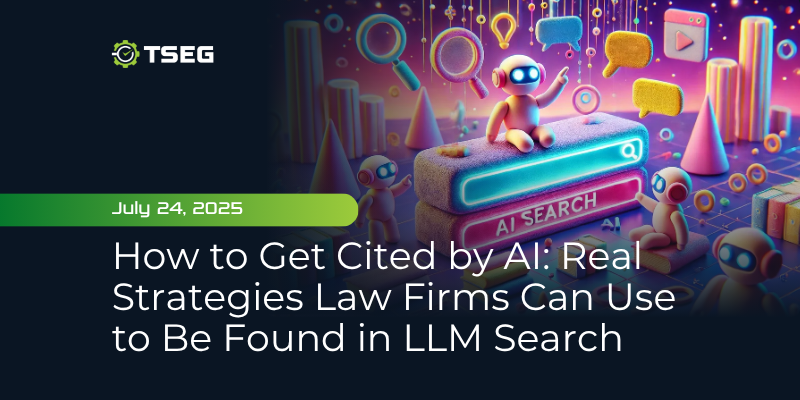How to Get Cited by AI: Real Strategies Law Firms Can Use to Be Found in LLM Search
Posted on Saturday, July 26th, 2025 at 1:04 am
What It Takes to Be Found in AI Search Results
We’re witnessing a new phase of search as we know it. Law firms still focused on ranking in traditional search results may be overlooking where real decisions are being made. Large language models like ChatGPT, Claude, and Perplexity now deliver direct answers to legal questions, including some that could influence their decision to hire one law firm over another. These tools often include citations to original sources, and if your firm’s content is not being referenced, you’re missing out on potential cases.
When someone asks a legal question in an AI tool, the response often includes references to websites that have published content strong and “worthy” enough to be included. That can mean a link, a brand mention, or a direct quote. If your firm is not appearing, the model likely does not see your content as reliable or original enough.
Being cited by AI models gives your firm credibility. Just like being quoted in the press, it shows your content is seen as informative and trustworthy. That matters to potential clients, referral sources, and the broader legal community.
These models are learning from large collections of text to decide which sources deserve attention. Content that restates basic ideas without offering anything new will be ignored.
To appear in AI-generated results, your firm needs to publish content that contributes something meaningful. Anything less is quickly passed over.
Deliver Actual Value, Not Just Keywords
Most law firm websites are filled with material written to check SEO boxes instead of sharing valuable knowledge. So many practice area pages, FAQs, and blog posts too often repeat the same explanations found on hundreds of other lawyer websites. That kind of content is essentially invisible to modern AI systems. What large language models are designed to find and cite is content with genuine information gain.
Information gain refers to whether a piece of content adds something new to the body of knowledge already available online. If your site simply repeats what others have already said, it will be filtered out. AI models prioritize original data, fresh analysis, and specific insights.
Search engines have been moving in this direction for years. Google has even patented the concept of identifying content with high information gain. Now, with generative tools powering search summaries for legal queries, search has transitioned the standard more towards this redefining of value.
Law firms need to start thinking like publishers, not just SEOers. Publishing a fresh and unique approach to content that goes beyond legal definitions can help your content stand out. That kind of work is more likely to earn links, mentions, and citations from AI systems trained to identify original material.
The firms being cited today are not relying on generic articles or keyword-heavy guides. They are producing focused content that provides answers only they can give. That is what makes a law firm’s name worth including in a response generated by an AI model.
As an example, existing content on your webpage can be updated on a regular schedule to add recency and authority to your site. This, with the right technical optimizations, can make your content more appealing for AI tools as it sees your updates as fresh and valuable. We do this on our website with all of our mass tort litigation pages, such as the Depo Provera Lawsuit Campaigns page.

Data Strategy is Evolving Keyword Research
Most keyword tools are built for advertising, not for content discovery in AI platforms. They show what phrases trigger ads or drive traffic, but they say nothing about which sources large language models actually draw from. Law firms still building content calendars around search volume reports are planning for the wrong audience.
Large language models are trained to use books, research papers, articles, transcripts, and other long-form material to build their understanding of subjects. If your content is not part of that input, it will not be part of the output either.
The goal should be to publish intricate work that these models treat as source material. That means focusing on the kinds of publications and datasets LLMs actually train on. ChatGPT, for example, has confirmed partnerships with publishers like the Associated Press, Financial Times and Reuters to name a few. Grok pulls from real-time activity from X (Twitter) to include information about current events and news. These models, plus several others, rely on patterns of authority, frequency, and originality when choosing what to cite.
Law firms can meet that standard by creating content built from actual research. Commission a survey, publish an analysis of verdict data, or release a study based on intake patterns or case outcomes. This not only serves your prospective clients but also gives LLMs a reason to view your firm as a wealthy source of information worth learning from.
Writing content without taking steps to research appropriately is no longer enough. Publishing something that reflects what people are currently discussing online, using proprietary data that has not yet been widely shared, or offering a unique perspective on a niche subject creates an opportunity to become part of the AI feedback loop. When your content becomes the input, your firm becomes the answer people are asking for. Below is an example showing 5 out of 6 citations are law firm websites with the other citation being Wikipedia.

Don’t Lose The Human Voice
Even with the rise of AI search, technical content practices still matter. But those practices only help when law firms take the extra steps to ensure the content is original, well-written, and most importantly checked by humans. Large language models are designed to identify patterns. Rewritten summaries and recycled material are easy to spot and just as easy to ignore.
AI-generated content is usually easy to detect. We all have our own list of identifiers that shoot up a red “this is AI” flag. It often lacks original insight, fluffs up vague statements, and repeatedly overuses the same writing styles. When firms completely rely on AI to generate content, those pages might pass for blog filler, but they will never be cited by an LLM. The best these tools can do is repackage what already exists. They cannot create new insights, tell firsthand stories, or respond to current developments with personal experience.
Firms that want to earn AI’s trust need to treat authorship seriously.
- • Write with a voice.
- • Use real data.
- • Offer perspectives grounded in actual cases.
AI tools are looking for sources that feel human, not machine-made. Content that sounds like a person wrote it is easier to trust and more likely to be shared, quoted, or cited.
Support AI Discoverability with Technical Structure
In addition to writing content worth reading, structure still plays a role. AI tools scan content in ways that benefit from clear formatting and accessible architecture. These practices help make that possible:
- • Use HTML to build anchor links within long content
- • Provide RSS feeds or content APIs that allow machine-readable access
- • Include question-and-answer formats that align with how people speak
- • Use schema to define page content more clearly for machines
- • Make sure your site allows LLMs to crawl and access content
These practices will not compensate for weak content, but they do make it easier for AI to find and process your pages efficiently. When combined with writing that sounds like it came from an expert, not a template, they give your firm a real chance to stand out.
Earn Trust From Both AI and Potential Clients
The same content that earns attention from large language models also earns trust from people. AI tools are trained to identify what users value: useful, original material. A firm that publishes new insights, shares client-relevant data, or comments with clarity and depth is more likely to be cited and more likely to be contacted.
Lawyers have always earned new business by first earning trust. In today’s search environment, that trustworthiness is measured by both human readers and machine readers. The material that moves AI models to treat your site as a source is the same material that moves people to pick up the phone.
TSEG helps law firms create that kind of content. We develop original strategies backed by research and structured for both visibility and influence. From surveys and data journalism to search-friendly content architecture, we produce work that earns attention across platforms, including AI.
If your firm is ready to publish work that stands out, we’re ready to build it with you. Reach out today.
